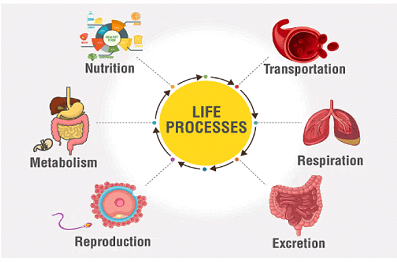Important Carbon Compounds
Comprehensive Guide for Chemistry Students
Introduction
Carbon forms the backbone of numerous compounds essential to life and industry. Due to its tetravalent nature and ability to form stable covalent bonds, carbon creates an incredible variety of compounds that are integral to our daily lives. In this blog post, we will explore important classes of carbon compounds, their structures, properties, and significance in various applications.
Note: The versatility of carbon enables it to form over 10 million different compounds, making organic chemistry one of the largest branches of chemistry.
Classification of Important Carbon Compounds
Carbon compounds can be classified into various categories based on their functional groups, structures, and properties. Here are some important classes of carbon compounds:
1. Hydrocarbons
Hydrocarbons are compounds containing only carbon and hydrogen atoms. They serve as the fundamental building blocks for more complex organic molecules.
| Type | General Formula | Example | Properties |
|---|---|---|---|
| Alkanes | CnH2n+2 | Methane (CH4), Ethane (C2H6) | Saturated, relatively inert, undergo combustion and substitution reactions |
| Alkenes | CnH2n | Ethene (C2H4), Propene (C3H6) | Unsaturated with C=C double bond, undergo addition reactions |
| Alkynes | CnH2n-2 | Ethyne (C2H2), Propyne (C3H4) | Unsaturated with C≡C triple bond, highly reactive |
| Aromatic | Based on C6H6 | Benzene (C6H6), Toluene (C7H8) | Cyclic, planar, resonance-stabilized, undergo substitution reactions |
Exam Tip: Remember that unsaturated hydrocarbons (alkenes and alkynes) decolorize bromine water and KMnO4 solution, which is a common test in practical exams. Alkanes do not show this reaction.
2. Alcohols
Alcohols contain the hydroxyl (-OH) functional group attached to a carbon atom. The general formula is R-OH, where R is an alkyl group.
Classification of Alcohols:
- Primary alcohols: The -OH group is attached to a carbon atom that is bonded to only one other carbon atom (e.g., ethanol)
- Secondary alcohols: The -OH group is attached to a carbon atom that is bonded to two other carbon atoms (e.g., isopropyl alcohol)
- Tertiary alcohols: The -OH group is attached to a carbon atom that is bonded to three other carbon atoms (e.g., tert-butyl alcohol)
Alcohols are widely used as solvents, antiseptics, and in the production of other organic compounds. A detailed discussion on ethanol will be covered in a subsequent blog post.
3. Aldehydes and Ketones
Aldehydes and ketones contain the carbonyl group (C=O). In aldehydes, the carbonyl group is attached to at least one hydrogen atom, while in ketones, it is attached to two carbon atoms.
Aldehyde Structure
Ketone Structure
| Compound | Structure | Uses |
|---|---|---|
| Formaldehyde | HCHO | Preservative, production of resins |
| Acetaldehyde | CH3CHO | Production of acetic acid, perfumes |
| Acetone | CH3COCH3 | Solvent, nail polish remover |
Exam Tip: Aldehydes can be distinguished from ketones using Fehling’s solution or Tollens’ reagent. Aldehydes give positive results (red precipitate with Fehling’s, silver mirror with Tollens’), while ketones do not react.
4. Carboxylic Acids
Carboxylic acids contain the carboxyl group (-COOH). The general formula is R-COOH.
Carboxylic acids are weak acids that undergo typical acid reactions. They can form esters when reacted with alcohols. Ethanoic acid (acetic acid) is one of the most important carboxylic acids and will be discussed in detail in a subsequent blog post.
5. Esters
Esters have the general formula R-COO-R’. They are formed by the reaction between carboxylic acids and alcohols in the presence of a concentrated acid catalyst.
Esters are known for their pleasant fruity odors and are used in perfumes, flavorings, and as solvents. Some common esters include:
- Ethyl acetate (CH3COOC2H5): Used as a solvent and nail polish remover
- Methyl salicylate (C8H8O3): Oil of wintergreen, used in liniments and flavoring
- Butyl acetate (CH3COO(CH2)3CH3): Found in many fruits, used in perfumes
Note: Esterification is a reversible reaction. The reverse process (hydrolysis of esters) can occur in acidic or basic conditions, with the latter called saponification when applied to triglycerides to produce soaps.
Other Important Carbon Compounds
1. Amines
Amines are organic derivatives of ammonia (NH3) where one or more hydrogen atoms are replaced by alkyl or aryl groups. They are classified as primary (R-NH2), secondary (R-NH-R’), or tertiary (R-N-R’-R”) amines.
Amines are basic in nature and are important in biological systems. Many drugs and neurotransmitters contain amine groups.
2. Fats and Oils
Fats and oils are triglycerides—esters formed from glycerol and three fatty acid molecules. They are an important source of energy in living organisms.
Differences between fats and oils:
- Fats are solid at room temperature and usually of animal origin
- Oils are liquid at room temperature and usually of plant origin
- Fats generally contain more saturated fatty acids, while oils have more unsaturated fatty acids
3. Carbohydrates
Carbohydrates have the general formula Cn(H2O)m and include sugars, starch, and cellulose. They are the primary source of energy for most organisms.
Classification of carbohydrates:
- Monosaccharides: Simple sugars like glucose (C6H12O6) and fructose
- Disaccharides: Formed by joining two monosaccharides, like sucrose (table sugar) and lactose
- Polysaccharides: Complex carbohydrates formed by joining many monosaccharide units, like starch, cellulose, and glycogen
4. Polymers
Polymers are large molecules formed by linking many small molecules (monomers) together. They can be natural (like proteins and cellulose) or synthetic (like polyethylene and nylon).
Common synthetic polymers:
| Polymer | Monomer | Uses |
|---|---|---|
| Polyethylene | Ethene (C2H4) | Plastic bags, bottles, toys |
| Polyvinyl chloride (PVC) | Vinyl chloride (C2H3Cl) | Pipes, wire insulation, flooring |
| Polystyrene | Styrene (C8H8) | Insulation, packaging, disposable containers |
| Nylon | Diamine and dicarboxylic acid | Clothing, ropes, machine parts |
Significance of Carbon Compounds in Daily Life
Carbon compounds have numerous applications in our daily lives:
- Fuels: Hydrocarbons like methane, propane, gasoline, and diesel are essential energy sources
- Medicines: Most drugs are carbon compounds specifically designed to interact with biological systems
- Foods: Carbohydrates, proteins, fats, and vitamins are all carbon compounds essential for nutrition
- Materials: Plastics, synthetic fibers, adhesives, and many construction materials are carbon-based
- Cosmetics: Perfumes, creams, and makeup products contain various carbon compounds
- Cleaning products: Soaps, detergents, and solvents often contain carbon compounds
Exam-Focused Summary
Key Points to Remember:
- Carbon forms four covalent bonds due to its tetravalent nature
- Functional groups determine the chemical properties of organic compounds
- Hydrocarbons are classified as alkanes (CnH2n+2), alkenes (CnH2n), alkynes (CnH2n-2), and aromatic compounds
- Alcohols contain the -OH group and are classified as primary, secondary, or tertiary
- Aldehydes have -CHO group; ketones have the carbonyl group between two carbon atoms
- Carboxylic acids contain the -COOH group and can form esters with alcohols
- Esters have the -COO- linkage and often have pleasant fruity smells
- Polymers are large molecules formed by linking many small monomer units
Practice Questions:
- What is the functional group present in alcohols?
- Distinguish between aldehydes and ketones based on their structure and chemical tests.
- What is the process of forming an ester from a carboxylic acid and an alcohol called?
- Draw the structural formula of ethanol and explain its physical properties.
- Explain the difference between addition and substitution reactions with examples.



